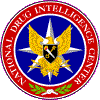ARCHIVED
![]() To Contents
To Previous Page To
Sources To Publication Page
To Home Page
To Contents
To Previous Page To
Sources To Publication Page
To Home Page

|
National Drug
Intelligence Center Louisiana Drug Threat Assessment May 2001 OutlookEconomic expansion, flourishing tourism, and improvements to the state's transportation infrastructure may contribute to a rise in drug trafficking and abuse in Louisiana. As the Shreveport/Bossier City metropolitan area expands into a regional gambling hub and attracts tourists from throughout Texas and the southwest, drug distribution and abuse may increase. Casino gambling and a booming economy also provide an atmosphere where big dollar spending goes largely unnoticed. Local drug traffickers and distributors use various methods to launder illicit proceeds through casinos. Interstate highway 69, a proposed 1,600-mile transcontinental interstate highway intended to link Mexico to eastern Canada, would pass through northwest Louisiana near Shreveport and may bring an increase in drug transportation and distribution. Although crack cocaine abuse appears to be leveling off or subsiding, it will continue to be the most significant drug problem in Louisiana. Crack sales by street gangs and the attendant violence are spreading from large urban areas to suburban and rural areas. Law enforcement sources throughout Louisiana report that violent crime associated with the sale and abuse of crack cocaine is a serious problem. Some law enforcement personnel in Louisiana suggest an upsurge in the use of powdered cocaine among young people aged 16 to 25. Heroin abuse, after increasing to alarming levels in New Orleans, is already expanding beyond the limits of the inner city. A growing category of young, Caucasian, suburban heroin users in the greater New Orleans metropolitan area provide a market that is ripe for exploitation. Market competition will continue to drive purity higher and prices lower, making heroin appealing to a growing number of people. The spread of blood-borne diseases such as AIDS and hepatitis C will inevitably increase, as intravenous users continue to share their "works" (injection paraphernalia). As the New Orleans distribution market becomes saturated, distributors will expand into larger neighboring cities in a search for new customers. Methamphetamine availability and production are growing rapidly in Louisiana, especially in the north. If other states in the region such as Arkansas and Missouri are a guide, the growth in the number of methamphetamine laboratories in Louisiana poses a serious threat to abusers, law enforcement personnel, and the environment. Methamphetamine is the most significant drug threat in many rural areas in the north, due to the increased use of the Nazi method of production. Methamphetamine abuse in New Orleans may increase as the drug becomes more popular in rave circles. Declining negative attitudes and an abundance of inexpensive Mexico-produced marijuana may increase teen marijuana abuse levels. The trend throughout much of the country is toward high-quality, indoor-cultivated cannabis. The popularity of hydroponic cannabis will continue to rise in Louisiana, especially among the affluent. Club drugs such as MDMA, GHB, LSD, and ketamine represent a rapidly growing threat. Police throughout the state report that MDMA is no longer simply a rave drug, but is gaining wider use among young people. The diversion of powerful prescription pharmaceuticals such as OxyContin, Vicodin, Soma, and Valium will continue to increase. Police throughout the state identify this as a problem that has arrived in full force and is continuing to grow. Users and distributors are burglarizing pharmacies increasingly to obtain the drugs. Police also report more people are purchasing these drugs in Mexico, where a prescription is generally not required.
|
End of page.